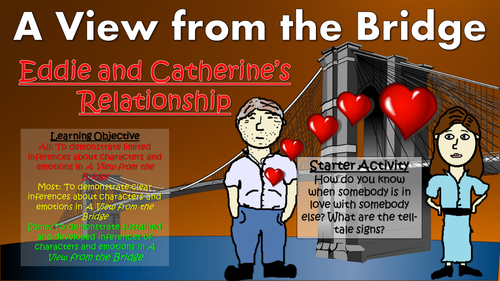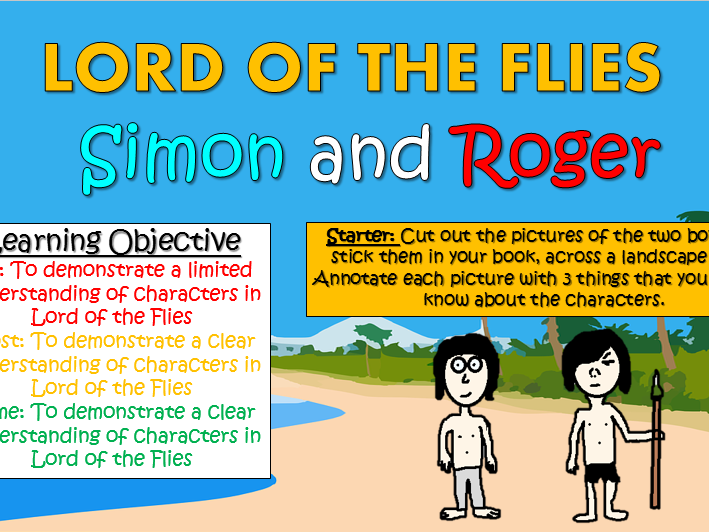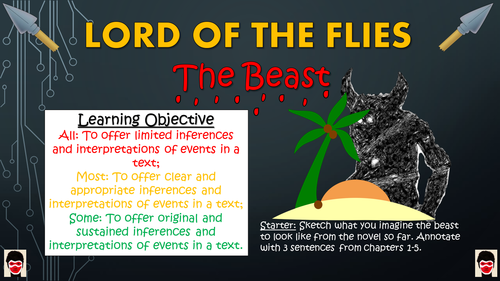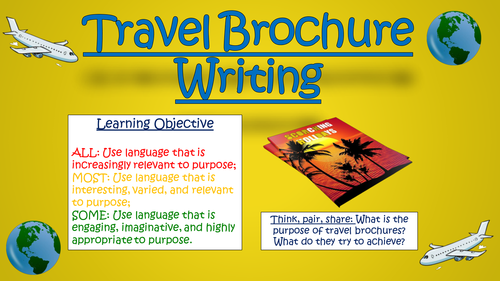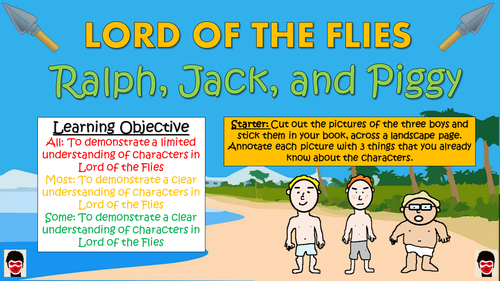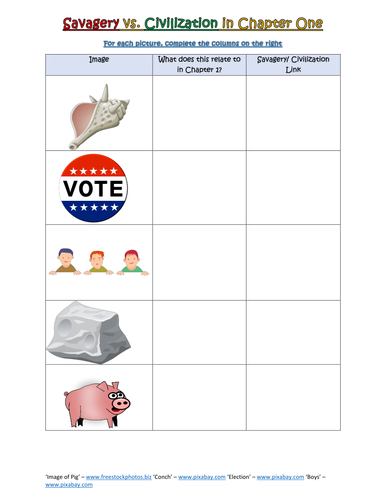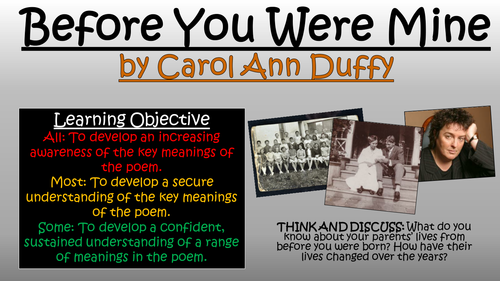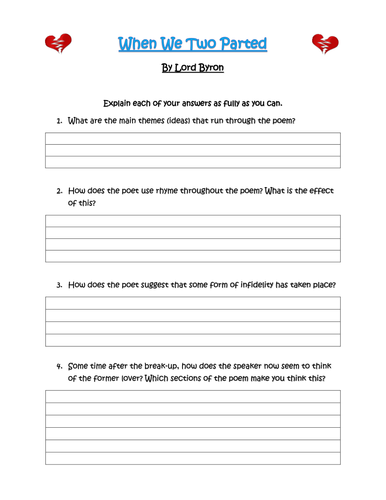
3k+Uploads
1950k+Views
2268k+Downloads
New teachers

A View from the Bridge: Greek Tragedy - Eddie's Downfall!
This interesting and highly-stimulating lesson students to demonstrate a developed, sustained understanding of the structural features of the Greek Tragedy which are utilised in Arthur Miller’s A View from the Bridge. In particular, students engage analytically with Eddie’s ‘hamartia’ and catastrophic downfall at the end of Act II. Students examine how Eddie’s role as a tragic hero, his fatal flaw, and the sense of fate which runs throughout, mirrors the features of Greek Tragedies.
The lesson follows a clear, logical, bite-size learning journey, which guides students towards differentiated learning objectives. Over the course of this journey, they become able to:
- Define and identify the features of Greek Tragedies;
- Understand Miller's views towards Greek Tragedies, and his intentions for writing the play in this form;
- Identify the features of Greek Tragedy in A View from the Bridge;
- Critically engage with text as a Greek Tragedy, considering how Eddie's downfall is constructed by his fatal flaws, hamartia, and catastrophe;
-Peer assess each other's learning attempts.
This resource pack includes:
- A visually engaging whole-lesson PowerPoint presentation;;
- Paper copies and online links to the extract needed for the lesson (end section of Act Two);
- Greek Myths Definitions Cards;
- Greek Myths worksheet (including answer sheet for teachers);
- A logically scaffolded essay template;
- A detailed lesson plan, complete with what the teacher and students should aim to achieve at each stage of the lesson.
All images are licensed for commercial use, and are cited on the final slide of the PowerPoint.

A View from the Bridge: Miller's Language Devices!
This interesting and highly-stimulating lesson enables students to demonstrate a developed, sustained understanding of the language devices utilised in Arthur Miller’s A View from the Bridge. In particular, students engage analytically with Miller’s use of language at the beginning of Act II, in which Eddie Carbone appears to lose control over his actions. Students examine how similes, rhetorical questions, imperative commands, and other language features serve to highlight his descent into desperation.
The lesson follows a clear, logical, bite-size learning journey, which guides students towards differentiated learning objectives. Over the course of this journey, they become able to:
- Define and provide examples for each of the relevant language devices;
- Identify each of the language devices in short sentences, and begin to comment upon their effect;
- Understand some of Miller's intentions behind writing the play;
- Critically engage with Miller's use of language devices at the end of the Act Two, including the events leading up to Eddie's call to the Immigration Office;
-Peer assess each other's learning attempts.
This resource pack includes:
- A visually engaging whole-lesson PowerPoint presentation;;
- Paper copies and online links to the extract needed for the lesson (beginning section of Act Two);
- Language Devices Cards;
- Language Devices worksheet (including answer sheet for teachers);
- A logically scaffolded essay template;
- A detailed lesson plan, complete with what the teacher and students should aim to achieve at each stage of the lesson.
All images are licensed for commercial use, and are cited on the final slide of the PowerPoint.
Bundle Sale

Travel Writing Lesson Bundle!
These engaging and detailed resources have been designed to make the teaching and learning of Travel Writing exciting, interesting, and easily accessible for all children. Throughout each lesson, students consider a different element of their writing (content, language, and structure) in order to produce imaginative and appropriate travel writing texts. Each lesson contains a comprehensive whole lesson PowerPoint, all the resources that you will need, and a lesson plan.
Included are the following lessons:
1. Travel Writing: Crafting Imaginative Content
2. Travel Writing: Constructing Imaginative Language;
3. Travel Writing: Creating Imaginative Structures
All images are licensed for commercial use, and are cited on the final slide of the PowerPoint/ the bottom of worksheets.

A View from the Bridge: Eddie and Catherine's Relationship
This interesting and highly-stimulating enables students to make clear and sustained inferences regarding the main characters and their relationships in Arthur Miller’s A View from the Bridge. In particular, students read between the lines in decoding the subtle cues suggestive of Eddie’s feelings towards Catherine in the opening stages of Act I.
The lesson follows a clear, logical, bite-size learning journey, which guides students towards differentiated learning objectives. Over the course of this journey, they become able to:
- Understand the key learning skill of inference;
-Infer key meanings from short extracts of texts;
- Read and understand the opening section of Act I, in which we are introduced to the Carbone family, and infer and interpret the key information provided regarding their relationships;
- Demonstrate an understanding of Eddie's hidden feelings for Catherine, and Beatrice's knowledge of this;
- Write an emotive diary entry from Beatrice's viewpoint, using evidence from the text to demonstrate an understanding the key meanings from the act;
-Peer assess each other's learning attempts.
This resource pack includes:
- A visually engaging whole-lesson PowerPoint presentation;;
- Paper copies and online links to the extract needed for the lesson (Beginning of Act I);
- Inferences worksheet (including answer sheet for teachers);
- A detailed lesson plan, complete with what the teacher and students should aim to achieve at each stage of the lesson.
All images are licensed for commercial use, and are cited on the final slide of the PowerPoint.
Bundle Sale

Lord of the Flies Huge Bundle!
This bundle contains all of the Lord of the Flies lessons, the comprehension activities booklet, the knowledge organiser and the Pointless game!
These engaging, varied, and informative lessons have been designed to help students gain a valuable understanding of the plot, characters, language, and key messages in William Golding’s novel ‘Lord of the Flies.’ The lessons enable students to gain a comprehensive understanding of the key features of content, language, and structure, in addition to considering Golding’s key intentions in writing the novel.
All of the resources that you need to teach are included in the bundle: Whole lesson step-by-step PowerPoint presentations, informative and engaging , worksheets, activities, and lesson plans.
Contained in the bundle are lessons based on:
- 1. Savagery vs Civilization;
- 2. Ralph, Jack, and Piggy;
- 3. Golding’s Language Devices;
- 4. The Beast
- 5. Simon and Roger
- 6. The Ending
Plus the 30-page comprehension booklet, the knowledge organiser and the Lord of the Flies Pointless Game!
Stimulating, visual, and easily adaptable, these lessons provide suggested learning objectives and outcomes for students of a wide-range of abilities - The vast majority of tasks are differentiated to allow for different abilities and needs in your classroom. Each lesson loosely follows this logical learning journey to ensure that students learn in bite-size steps:
- Engaging
- Defining/ Understanding
- Identifying/Remembering
- Analysing/ Creating
- Peer or self evaluating.
All of the lessons are interactive, employ a variety of different teaching and learning methods and styles, and are visually-engaging.

Lord of the Flies: The Ending
This interesting and highly-stimulating lesson enables students to make clear and sustained interpretations about the final chapters of William Golding’s Lord of the Flies. Students engage analytically with the key events, characters, and quotations in the closing stages of the novel, and interpret patterns in the development of their behaviour from earlier sections of the text.
The lesson follows a clear, logical, bite-size learning journey, which guides students towards differentiated learning objectives. Over the course of this journey, they become able to:
- Sort key events from earlier chapters to re-familiarise themselves with the events of the text;
- Think creatively about how different objects, ideas, and characters are represented throughout different sections of the text;
- Read and understand Chapters Eleven and Twelve of the play, with a particular focus upon how the behaviour of the key characters has developed over time;
- Chart the balance between civilization and savagery over the course of the novel, justifying decisions based upon relevant textual evidence;
- Analyse the how the behaviour of the key characters alters over the course of the novel, through answering a structured exam-style question;
-Peer assess each other's learning attempts.
This resource pack includes:
- A visually engaging whole-lesson PowerPoint presentation;
- Plot Cards for the card-sorting activity;
- Links to the extracts of the text needed for the lesson (Chapters Eleven and Twelve in this case);
- Graph template with justification boxes for the development activity;
- A logically scaffolded essay template;
- A detailed lesson plan, complete with what the teacher and students should aim to achieve at each stage of the lesson.
All images are licensed for commercial use, and are cited on the final slide of the PowerPoint.

Lord of the Flies: Simon and Roger
This interesting and highly-stimulating lesson enables students to gain a clear understanding of how the characters of Simon and Roger are introduced and developed in William Golding’s Lord of the Flies. Students learn to compare and contrast the two characters, with particular reference to their respective propensities for kindness and savagery.
The lesson follows a clear, logical, bite-size learning journey, which guides students towards differentiated learning objectives. Over the course of this journey, they become able to:
- Use illustrations to explain what they already know about each of the characters;
- Understand how each of the characters are introduced, and demonstrate an awareness of the role that they play on the island;
- Read and understand Chapters Eight, Nine, and Ten of the play, with a particular focus upon how the characters of Simon and Roger can be compared, and how they develop over time;
- Analyse key quotations about/by each of the characters,interpreting what this shows the readers about their characters;
- Complete a comparison between the two characters, in response to an essay-style question;
-Peer assess each other's learning attempts.
This resource pack includes:
- A visually engaging whole-lesson PowerPoint presentation;
- Detailed worksheets, with answer sheets where necessary;
- Links to the extracts of the text needed for the lesson (Chapters Eight, Nine and Ten in this case);
- Original images for students to complete their annotations;
- A logically scaffolded essay template;
- A detailed lesson plan, complete with what the teacher and students should aim to achieve at each stage of the lesson.
All images are licensed for commercial use, and are cited on the final slide of the PowerPoint.

Lord of the Flies: The Beast
This interesting and highly-stimulating lesson enables students to make important inferences and interpretations regarding ‘the beast’ that is referred to by the boys on the island throughout William Golding’s novel Lord of the Flies. In particular, students form opinions of what the beast may represent, based upon key evidence throughout the text.
The lesson follows a clear, logical, bite-size learning journey, which guides students towards differentiated learning objectives. Over the course of this journey, they become able to:
- Establish, sketch, evidence, and share their initial interpretations of the beast;
- Collaborate with others to form rational and substantiated opinions;
- Read and understand Chapters Six and Seven of the play, with a particular focus upon how Golding utilises the beast to depict other concepts and notions;
- Analyse key quotations which refer to the beast in relation to each of the characters;
- Give appropriate and sustained interpretations and inferences regarding altering views towards Golding's use of the beast;
-Peer assess each other's learning attempts.
This resource pack includes:
- A visually engaging whole-lesson PowerPoint presentation;
- Detailed worksheet;
- A scaffolded essay template;
- Links to the extracts of the text needed for the lesson (Chapters Six and Seven in this case);
- A detailed lesson plan, complete with what the teacher and students should aim to achieve at each stage of the lesson.
All images are licensed for commercial use, and are cited on the final slide of the PowerPoint.
Bundle Sale

Travel Writing Big Bundle!
Contains all of the Travel Writing Lessons Travel Brochure Writing!
These engaging and detailed resources have been designed to make the teaching and learning of Travel Writing exciting, interesting, and easily accessible for all children. Throughout each lesson, students consider a different element of their writing (content, language, and structure) in order to produce imaginative and appropriate travel writing texts. Each lesson contains a comprehensive whole lesson PowerPoint, all the resources that you will need, and a lesson plan.
Included are the following lessons:
1. Travel Writing: Crafting Imaginative Content
2. Travel Writing: Constructing Imaginative Language;
3. Travel Writing: Creating Imaginative Structures
4. Travel Brochure Writing
All images are licensed for commercial use, and are cited on the final slide of the PowerPoint/ the bottom of worksheets.

Travel Brochure Writing!
This engaging and stimulating lesson enables students to create travel brochure texts containing appropriate and imaginative language choices, utilising a range of different language techniques with subtlety in order to craft writing that serves the dual purpose of being descriptive and persuasive. In particular, students learn how descriptive language such as of similes, metaphors, and personification, in addition to persuasive devices such as statistics, rhetorical questions, and personal pronouns, can help to create truly authentic and effective travel brochure pieces.
The lesson follows a clear, logical, bite-size learning journey, which guides students towards differentiated learning objectives. Over the course of this journey, they become able to:
- Define what travel brochures are and understand their purposes;
- Identify the persuasive and descriptive language devices that travel brochure writers employ
- Analyse the effects of the language in a model travel brochure text;
- Utilise a clear and challenging success criteria document in order to construct their own travel brochure pieces;
- Self/Peer assess travel writing attempts.
This resource pack includes:
- A visually engaging whole-lesson PowerPoint presentation;
- An interesting and ambitious travel writing extract (with a highlighted version for teachers):
-A logical and challenging worksheet, encouraging students to analyse key features;
- A detailed lesson plan, complete with what the teacher and students should aim to achieve at each stage of the lesson.
All images are licensed for commercial use, and are cited on the final slide of the PowerPoint.

Travel Writing: Constructing Imaginative Language
This engaging and stimulating lesson enables students to create travel writing texts containing appropriate and imaginative language choices, utilising a range of different language techniques with subtlety in order to craft vivid and thought-provoking writing. In particular, students learn how the subtle use of varied verbs, adverbs, and adjectives, in addition to descriptive devices such as similes, metaphors, and personification, can help to create truly authentic and descriptive travel writing pieces.
The lesson follows a clear, logical, bite-size learning journey, which guides students towards differentiated learning objectives. Over the course of this journey, they become able to:
- Define and identify verbs, adverbs, and adjectives, and understand the effects of varying these basic sentence building blocks;
- Employ appropriate and imaginative verbs, adverbs, and adjectives to describe a range of travel images;
- Understand and analyse how more advanced descriptive devices (similes, metaphors, personification, alliteration, and assonance) influence the effect of writing;
- Analyse a model travel writing attempt in relation to language features, before creating their own;
- Self/Peer assess travel writing attempts.
This resource pack includes:
- A visually engaging whole-lesson PowerPoint presentation;
- An interesting and ambitious travel writing extract (with a highlighted version for teachers):
-A logical and challenging worksheet, encouraging students to identify and analyse;
- A detailed lesson plan, complete with what the teacher and students should aim to achieve at each stage of the lesson.
All images are licensed for commercial use, and are cited on the final slide of the PowerPoint.

Lord of the Flies: Golding's Language Devices
This interesting and highly-stimulating lesson enables students to gain a clear understanding of the language choices utilised by William Golding’s throughout Chapters 4 and 5 of Lord of the Flies, with particular reference to the advanced figurative language employed in the descriptive sections of the text. Students also learn to analyse the effects of key language choices, with reference to Golding's key intentions throughout the novel.
The lesson follows a clear, logical, bite-size learning journey, which guides students towards differentiated learning objectives. Over the course of this journey, they become able to:
- Define, identify, and exemplify different types of language devices;
- Explain the effects of different language devices on meanings and different audiences;
- Read and understand Chapters Four and Five of the play, with a particular focus upon how Golding utilises language devices to demonstrate the changing feelings and mindsets of the boys on the island;
- Analyse key quotations which utilise effective descriptive devices;
- Analyse the effectiveness of Golding's language devices;
-Peer assess each other's learning attempts.
This resource pack includes:
- A visually engaging whole-lesson PowerPoint presentation;
- Detailed worksheets, with answer sheets where necessary;
- Links to the extracts of the text needed for the lesson (Chapters Four and Five in this case);
- Card sort cards;
- A detailed lesson plan, complete with what the teacher and students should aim to achieve at each stage of the lesson.
All images are licensed for commercial use, and are cited on the final slide of the PowerPoint.

Lord of the Flies: Ralph, Jack, and Piggy
This interesting and highly-stimulating lesson enables students to gain a clear understanding of how the characters of Ralph, Jack, and Piggy are introduced and developed in William Golding’s Lord of the Flies. Students learn to analyse the characters, with particular reference to the dramatization of the conflict between the characters’ instincts of savagery and civility, and how their psyche alters over time.
The lesson follows a clear, logical, bite-size learning journey, which guides students towards differentiated learning objectives. Over the course of this journey, they become able to:
- Use illustrations to explain what they already know about each of the characters;
- Understand how each of the characters are introduced, and demonstrate an awareness of the role that they play on the island;
- Read and understand Chapters Two and Three of the play, with a particular focus upon how the the characters of Ralph, Jack, and Piggy develop over time;
- Analyse key quotations about/by each of the three main characters, highlighting how their psyche is altering;
- Complete two diary entries from the viewpoint of one of the characters, showing a clear understanding of how the character has developed;
-Peer assess each other's learning attempts.
This resource pack includes:
- A visually engaging whole-lesson PowerPoint presentation;
- Detailed worksheets, with answer sheets where necessary;
- Links to the extracts of the text needed for the lesson (Chapters Two and Three in this case);
- Original images for students to complete their annotations;
- A detailed lesson plan, complete with what the teacher and students should aim to achieve at each stage of the lesson.
All images are licensed for commercial use, and are cited on the final slide of the PowerPoint.

Lord of the Flies: Savagery vs. Civilization
This interesting and engaging lesson enables students to understand the main themes prevalent throughout William Golding’s Lord of the Flies, with particular reference to the dramatization of the conflict between the instincts of savagery and civilization within human beings. In particular, students learn how the behaviour of the boys on the island demonstrates their inner battle between civil duty and primal instinct.
The lesson follows a clear, logical, bite-size learning journey, which guides students towards differentiated learning objectives. Over the course of this journey, they become able to:
- Define and explain the key terms 'savagery' and 'civilization';
- Apply real-life scenarios to an understanding of Freud's conception of the human psyche;
- Read and understand Chapter One of the play, with a particular focus upon the early struggle between civility and savagery;
- Analyse the key points at which civility and savagery are evident in the boys' behaviour;
- Utilise a writing template to compose an essay focusing on the conflict between savagery and civilization in the early sections of the novel;
-Peer assess each other's learning attempts.
This resource pack includes:
- A visually engaging whole-lesson PowerPoint presentation;
- Detailed worksheets, with answer sheets where necessary;
- Links to the extracts of the text needed for the lesson (Chapter One in this case);
- P.E.E template for students to complete their analysis;
- A detailed lesson plan, complete with what the teacher and students should aim to achieve at each stage of the lesson.
All images are licensed for commercial use, and are cited on the final slide of the PowerPoint.
Bundle Sale

AQA Love/ Relationships Poetry Lesson Bundle!
These engaging, varied, and informative lessons have been designed to help students gain a valuable understanding of the content, language, and structure features of a range of Love and Relationships poems from the new AQA poetry anthology:
- Simon Armitage - Mother, Any Distance
- Lord Byron - When We Two Parted
- Carol Ann Duffy - Before You Were Mine
- Percy Bysshe Shelley - Love's Philosophy
- Thomas Hardy - Neutral Tones
In addition to this, the lesson on comparing poems is also included - essential for exam technique!
Students will vital skills in: interpreting the significant meanings poems, understanding the writer's ideas within poems, understanding the social and historical contexts of poems, and analysing features of content, language, and structure.
Stimulating, visual, and easily adaptable, these lessons provide suggested learning objectives and outcomes for students of a wide-range of abilities - The vast majority of tasks are differentiated to allow for different abilities and needs in your classroom. Each lesson loosely follows this logical learning journey to ensure that students learn in bite-size steps:
- Engaging
- Defining/ Understanding
- Identifying/Remembering
- Analysing/ Creating
- Peer or self evaluating.
All of the lessons are interactive, employ a variety of different teaching and learning methods and styles, and are visually-engaging. Resources, worksheets, and lesson plans are all provided.

Mother, Any Distance... Simon Armitage - Love/ Relationships Poetry
This interesting and engaging lesson enables students to build their knowledge of the content, language, and structure of Simon Armitage’s contemporary relationships poem ‘Mother, Any Distance...’ In particular, students learn how the poet’s use of figurative language portrays the key messages in the poem, for example the maternal relationship between the speaker and his mother.
Students learn through a logical and step-by-step learning journey, including:
-Discussing and applying the key messages and meanings in the poem;
-Understanding key contextual information about the poet and his life;
-Reading and interpreting the poem;
-Understanding the poem, with a particular emphasis upon the content, language, and structural features;
- Identifying and analysing the poet's use of figurative language;
-Writing an extended analysis piece based upon how Simon Armitage presents the strength of the maternal bond in Mother, Any Distance;
-Peer assessing their partners' analysis attempts.
Included is:
- Whole lesson PowerPoint - colourful, engaging and substantial; (including hyperlink to a reading of the poem)
- Copy of poem;
- Figurative Language in 'Mother, Any Distance' worksheet;
- Figurative Language in 'Mother, Any Distance' answer-sheet;
- Analysis template with in-built success criteria for creating well-structured responses;
- Comprehensive lesson plan.
There are also opportunities for group learning, peer assessment, and whole class discussion. This was originally taught to middle-ability year 9/10 groups, but can easily be differentiated for groups of different ages and abilities.
All images are licensed for commercial use, and image rights are listed on the last page of the presentation.
Bundle Sale

Love and Relationships Poetry Lesson Bundle!
These engaging, varied, and informative lessons have been designed to help students gain a valuable understanding of the content, language, and structure features of a range of Love and Relationships poems. Each of the poems are widely studied, with some being from the Literary Heritage bank, and most being fixtures in examination board anthologies:
- Simon Armitage - Mother, Any Distance
- Lord Byron - When We Two Parted
- Carol Ann Duffy - Before You Were Mine
- James Fenton - In Paris with You
- William Shakespeare - Sonnet 116
In addition to this, the lesson on comparing poems is also included - essential for exam technique!
Students will vital skills in: interpreting the significant meanings poems, understanding the writer's ideas within poems, understanding the social and historical contexts of poems, and analysing features of content, language, and structure.
Stimulating, visual, and easily adaptable, these lessons provide suggested learning objectives and outcomes for students of a wide-range of abilities - The vast majority of tasks are differentiated to allow for different abilities and needs in your classroom. Each lesson loosely follows this logical learning journey to ensure that students learn in bite-size steps:
- Engaging
- Defining/ Understanding
- Identifying/Remembering
- Analysing/ Creating
- Peer or self evaluating.
All of the lessons are interactive, employ a variety of different teaching and learning methods and styles, and are visually-engaging. Resources, worksheets, and lesson plans are all provided.
Individually, these resources would amount to £16, meaning that you can save 69%!
These resources can also be bought individually for £2 each

Before You Were Mine - Carol Ann Duffy - Love/ Relationships Poetry
This interesting and engaging lesson enables students to build their knowledge of the content, language, and structure of Carol Ann Duffy’s contemporary relationships poem ‘Before You Were Mine.’ In particular, students learn how the poet’s use of vocabulary, devices, and poetic structure portray the contrasts in the mother’s life between past and present.
Students learn through a logical and step-by-step learning journey, including:
-Discussing and applying the key messages and meanings in the poem;
-Understanding key contextual information about the poet and her life;
-Reading and interpreting the poem;
-Understanding the poem, with a particular emphasis upon the content, language, and structural features;
-Writing an extended analysis piece based upon how Duffy reflects on her mother’s past and the changes that she has made to her life since becoming a mother;
-Peer assessing their partners' analysis attempts.
Included is:
- Whole lesson PowerPoint - colourful, engaging and substantial; (including hyperlink to a reading of the poem)
- Copy of poem;
- 'How has Ma Changed?' comparison worksheet;
- Analysis template with in-built success criteria for creating well-structured responses;
- Comprehensive lesson plan.
There are also opportunities for group learning, peer assessment, and whole class discussion. This was originally taught to middle-ability year 9/10 groups, but can easily be differentiated for groups of different ages and abilities.
All images are licensed for commercial use, and image rights are listed on the last page of the presentation.
Bundle Sale

An Inspector Calls Lesson Bundle!
These engaging, varied, and informative lessons have been designed to help students gain a valuable understanding of each of the characters in J.B Priestley’s classic play ‘An Inspector Calls.’ The lessons enable students to gain a comprehensive understanding of the key features of plot, character, context, and language, in addition to considering the key messages being offered by Priestley.
All of the resources that you need are included in the bundle: informative and engaging whole lesson PowerPoints, worksheets, activities, and lesson plans.
Contained in the bundle are lessons based on:
- 1. Arthur Birling;
- 2. Sheila and Gerald;
- 3. Sybil and Eric Birling Double Lesson;
- 4. Inspector Goole (Priestley’s message)
- 5. Priestley’s Dramatic Devices
- 6. The Context of the Play
Stimulating, visual, and easily adaptable, these lessons provide suggested learning objectives and outcomes for students of a wide-range of abilities - The vast majority of tasks are differentiated to allow for different abilities and needs in your classroom. Each lesson loosely follows this logical learning journey to ensure that students learn in bite-size steps:
- Engaging
- Defining/ Understanding
- Identifying/Remembering
- Analysing/ Creating
- Peer or self evaluating.
All of the lessons are interactive, employ a variety of different teaching and learning methods and styles, and are visually-engaging.

When We Two Parted - Lord Byron - Love/ Relationships Poetry
This lesson enables students to build their knowledge of the content, language, and structure of Lord Byron’s classic love/relationships poem ‘When We Two Parted.’ In particular, students learn how the poet’s use of vocabulary, rhyme, and repetition influence the mood and tone of the poem.
Students learn through a logical and step-by-step learning journey, including:
-Understanding key contextual information about the poet and his life;
-Defining key terms and vocabulary from the poem;
-Reading and interpreting the poem;
-Understanding the poem, with a particular emphasis upon the content, language, and structural features;
-Writing an extended analysis piece based upon how Byron gets across the themes of sadness and forbidden love in the poem, through the use of language and structure;
-Peer assessing each other's learning attempts.
Included is:
- Whole lesson PowerPoint - colourful and substantial; (including hyperlink to a reading of the poem)
- Copy of poem;
- Key questions worksheet, with model answers;
- Analysis template with in-built success criteria for creating well-structured responses;
- Comprehensive lesson plan.
There are also opportunities for group learning, peer assessment, and whole class discussion. This was originally taught to middle-ability year 9/10 groups, but can easily be differentiated for groups of different ages and abilities.
All images are licensed for commercial use, and image rights are listed on the last page of the presentation.




